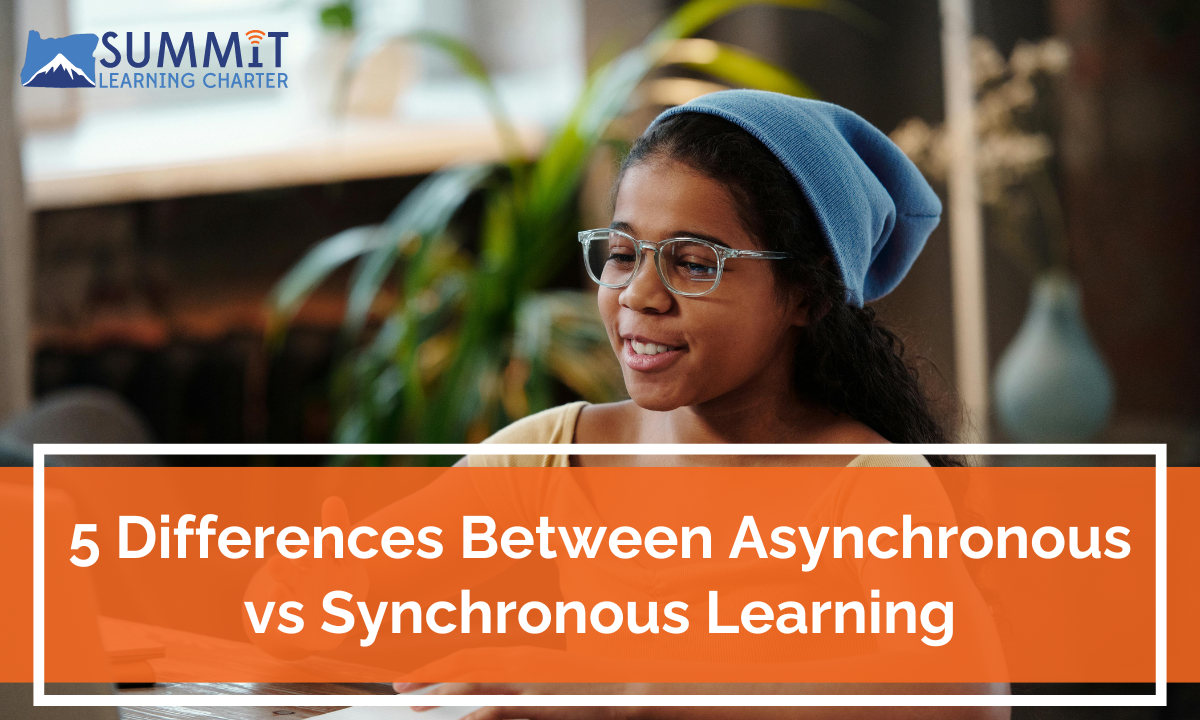
5 Differences Between Asynchronous vs Synchronous Learning
Online education is an effective alternative to traditional brick-and-mortar learning. But it’s important to note that online programs can differ quite a bit from one another – sometimes even at the same institution. Two major categories of virtual education are synchronous learning and asynchronous learning.
But what do these terms mean? Simply put, synchronous online learning takes place in real time, with students and instructors logging into virtual class meetings and interacting with one another on a set schedule. Asynchronous online learning, on the other hand, allows students to engage with course materials at their convenience during the week, without the need to adhere to a specific schedule.
Keep reading to learn everything you need to know about synchronous learning vs asynchronous learning.
Is Asynchronous or Synchronous Learning Better?

Truthfully, both synchronous and asynchronous classes can be fantastic learning strategies for students, each with their own set of unique pros and cons. The best class structure for your student will depend on their unique needs, learning style, and preferences.
Asynchronous learning is ideal for students with busy, unpredictable schedules or those who prefer independent learning. On the other hand, synchronous learning is best suited to students who thrive with student collaboration and real-time instruction.
1. Differences in Class Discussions
Class discussion in a synchronous course can play out much like a traditional classroom – except over a video call! This encourages students to think critically in the moment, get immediate answers to their questions, and discuss topics in a more conversational way.
Class discussions still play a big role in asynchronous classes as well – they just look a little bit different. Generally speaking, class discussions in an asynchronous class take place on a forum, where students will write a few paragraphs on a topic that’s based on a prompt. Subsequently, they’ll reply to other classmates’ posts to encourage a dialogue on the concept.
2. Differences in Lectures
Synchronous lectures are pretty straightforward. Students will join a virtual meeting and their instructor will lecture on the course material, often accompanied by images, graphs, and other visual aids. One of the main benefits of a real-time lecture is that students can simply “raise their hands” via the meeting software to ask questions and get answers immediately.
Asynchronous lectures may be pre-recorded by the instructor and contain the same subjects and supplemental materials as real-time lectures or be a series of lessons and assignments in a software-directed manner. While students won’t get immediate feedback like during live instruction, they can still ask any questions directly to their instructor after the lecture via various chat methods or attend scheduled office hours for more help.
Asynchronous lectures can be especially helpful for students in need of special accommodations such as closed-captioning. It also gives them the freedom to watch lectures at a convenient time so they can give the lesson their undivided attention.
3. Differences in Flexibility
The main difference between asynchronous and synchronous classes is scheduling. For students with busy schedules, special needs, or those who excel with a self-paced approach, an asynchronous course can be incredibly beneficial. This type of learning is flexible, allowing students to take exams, attend class, and complete assignments whenever works best for them.
Some young learners require and/or prefer collaborative lessons and thrive in a more structured environment. Having a set class schedule, real-time interaction with peers and instructors, and a more fast-paced learning environment might be the best option for them.
Related: Typical Day for a Student Attending Virtual School
4. Differences in Assessments

Assessments such as quizzes, exams, and presentations are fairly similar in both asynchronous and synchronous courses. However, there can be some differences depending on the instructor and the course itself.
Even synchronous classes will sometimes allow students to complete tests and quizzes independently any time before deadlines. However, some teachers may prefer to have students take tests on camera at the same time so they can supervise.
In an asynchronous course, presentations and oral essays can generally be pre-recorded and submitted later on. Some synchronous courses may also allow pre-recorded presentations, or they may require a real-time presentation in front of the class over video.
5. Differences in Classroom Activities
Classroom activities cover a wide range of learning exercises. Regardless of the type of class, there will likely be some ungraded activities aside from typical assessments or discussions. In a synchronous lesson, you may find activities taking place in a live virtual classroom. These may include trivia games, charades, at-home instructor guided science experiments, and role playing, among others.
In an asynchronous class, you’ll likely still participate in similar activities. But, they will almost always be conducted via online tools and software to allow students to get all the benefits of an ungraded classroom activity without a strict time commitment.
Related: How Virtual Charter Schools Accommodate Students
Which Method Should You Choose?
Ultimately, this decision entirely depends on the needs and preferences of you and your student. At Summit Learning Charter, we offer both synchronous and asynchronous learning to best meet the needs of our students and their families. With us, you can get the best of both worlds.
Blended Learning Options
SLC has always believed in the value of choice, flexibility, and personal goals in education. That’s why we offer blended learning options so students can take a mix of synchronous and asynchronous courses that best aligns with their learning and scheduling needs.
Our incredible support staff is available to work with students and their Learning Coaches as they develop a blended learning schedule.
Discover How Virtual Learning Is Transforming Education With Summit Learning Charter!

At Summit Learning Charter, we know that a one-size-fits-all approach doesn’t work for everyone. As a fully accredited online K-12 school in Oregon, we help students from all walks of life achieve their goals, reach their academic potential, and learn valuable real-life skills that they can take with them well beyond graduation.
If you’re interested in possibly making the switch to online school and discovering how asynchronous and synchronous learning works at SLC, we’re here to help!



